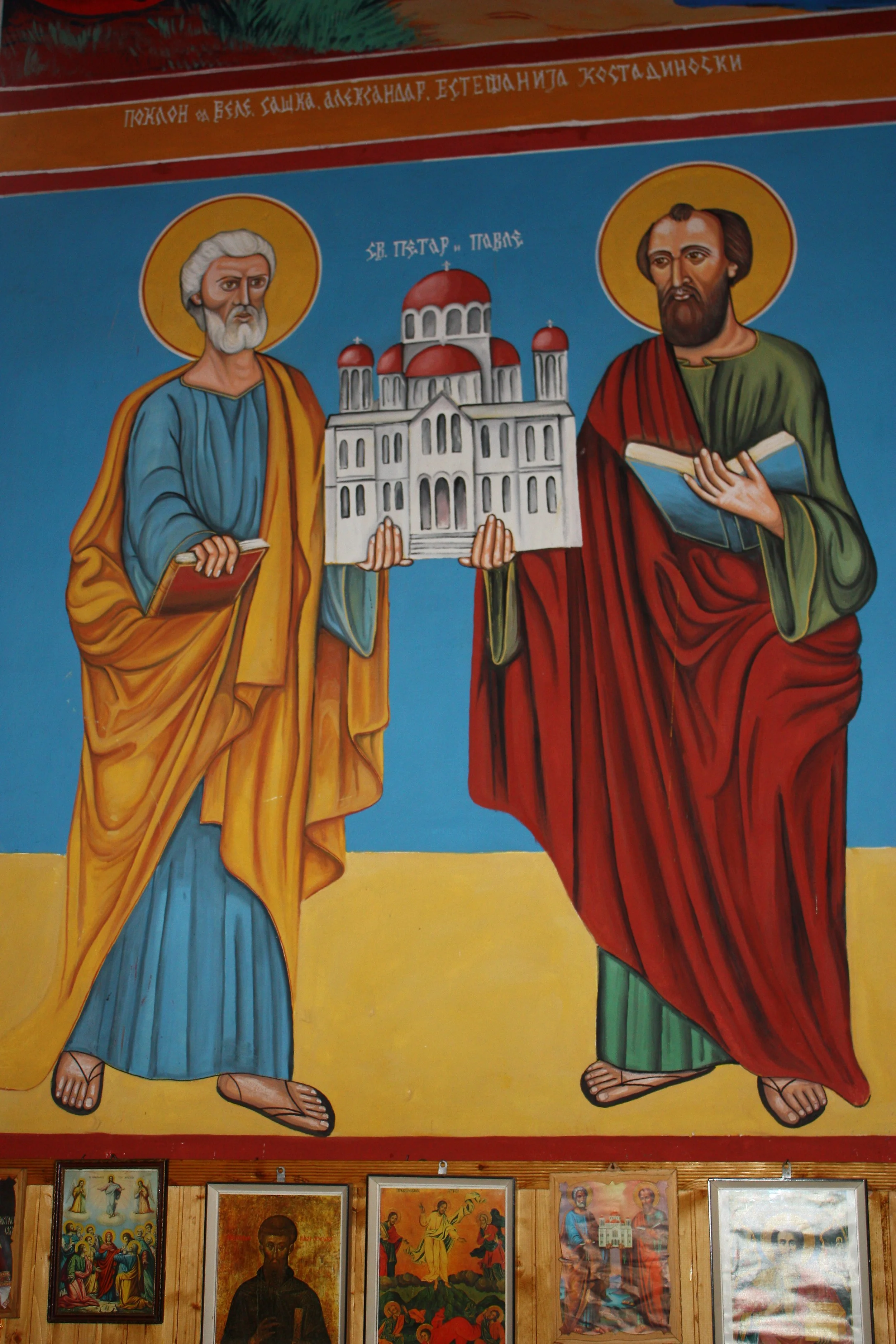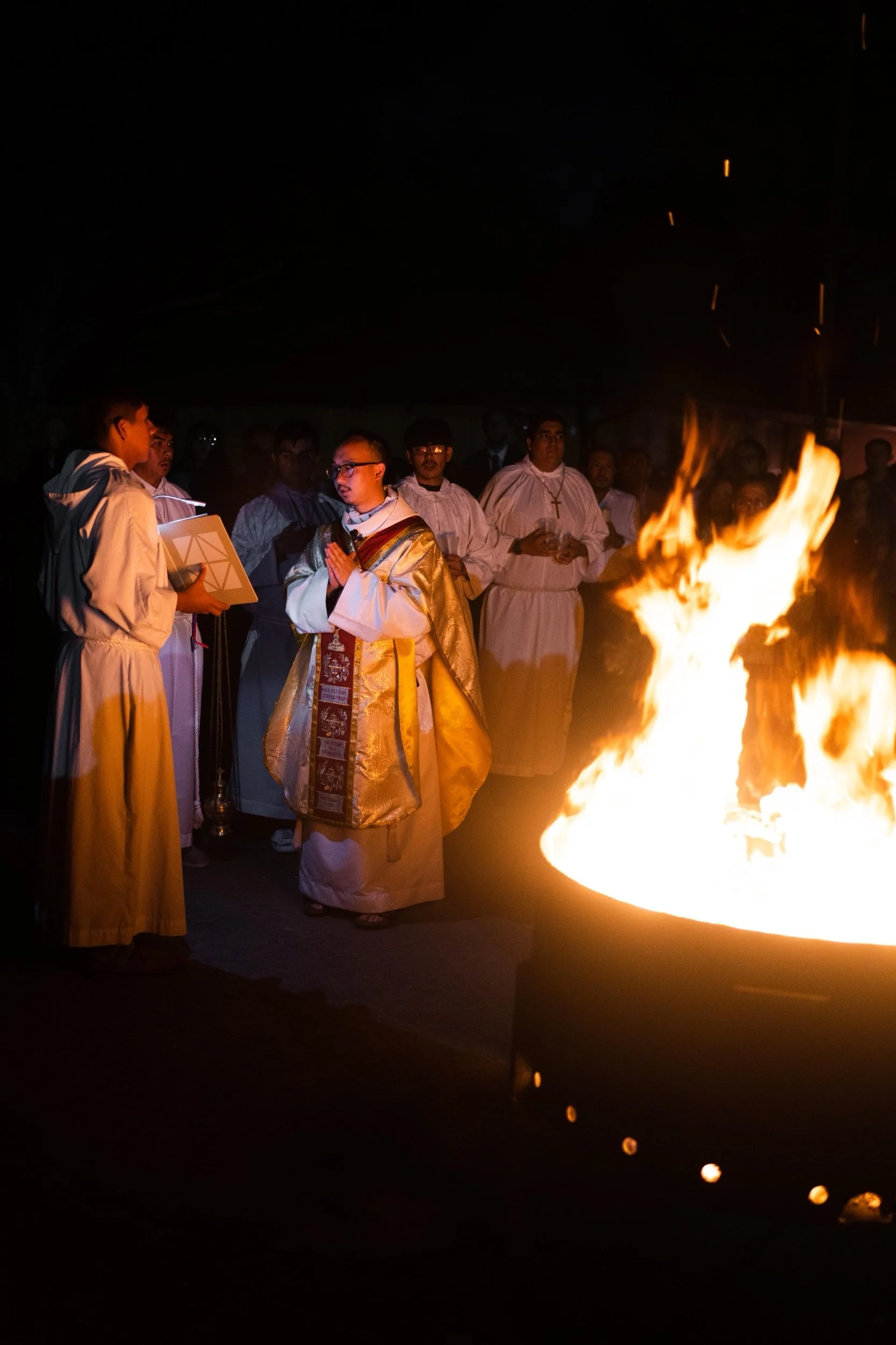Two Pillars
So today we celebrate the two greatest Apostles, St. Peter and St. Paul! Both St. Peter and St. Paul were martyred and gave their life in ancient city of Rome.
Pope St. Clement of Rome in his Epistle to the Corinthians written about 95AD, wrote: “Let us come to the most recent spiritual heroes. Let us take the noble examples furnished in our own generation. Through envy and jealousy the greatest and most righteous pillars [of the church] have been persecuted and put to death. Let us set before our eyes the illustrious apostles. Peter, through unrighteous envy, endured not one or two, but numerous labours; and when he had at length suffered martyrdom, departed to the place of glory due to him. Owing to envy, Paul also obtained the reward of patient endurance, after being seven times thrown into captivity, compelled to flee, and stoned. After preaching both in the east and west, he gained the illustrious reputation due to his faith, having taught righteousness to the whole world, and come to the extreme limit of the west, and suffered martyrdom under the prefects. Thus was he removed from the world, and went into the holy place, having proved himself a striking example of patience.”
Tradition has it that St. Peter preached to the Jews in Jerusalem and then made his way preaching in Antioch, Corinth and eventually Rome. There is a pious story that has been told of Peter’s martyrdom. One day, Peter was on his out of Rome to avoid Christian persecution, and on the way out, he encountered Jesus walking on that same road but going the other way towards Rome. Surprised by this encounter Peter ask Jesus, “Quo vadis, Domine?” (which means “Where are you going, Lord?”) To which Jesus tells him, “I am going to Rome to be crucified again.” After hearing this, Peter had a new found courage and returned to Rome where Peter indeed was crucified for the faith. And we know from tradition that Peter did not want to be crucified like Jesus because he felt unworthy, so he asked his executioners to crucify Him upside down. And so that’s why in many depictions of his death, you see St. Peter on the Cross upside down.
St. Paul we encounter him in the Acts of the Apostles and in his many letters. As we read in the Acts of the Apostles, on the road to Damascus, Paul (or Saul as he was known at the time) was struck down and a voice says to him, “Saul, Saul, why are you persecuting me?” to which He asks, “Who are you, Lord?” and the voice says to him, “I am Jesus, whom you are persecuting.” (Jesus identifies the suffering of his disciples with himself. He suffers when we suffer.) From that moment on, Paul, a well learned man under the great teacher Gamaliel, went all around the area proclaiming Jesus Christ. During his many journeys, Paul would suffer so much for the sake of the Gospel. He shares in his writings that he was beaten with rods, three time, once, he was stoned by a mob. Three times shipwrecked, Nearly-drowned at sea, imprisoned multiple times. He received forty lashes minus one, five times from the Jews, He faced constant opposition and threats to his life. He was forced to flee from many cities due to persecution and lastly there were plots to kill and assassinate him. Why did St. Paul suffer so much? Because of the Cross… because on the Cross, suffering is transformed by love. And when suffering is transformed by love, it has the power to save and liberate.
It is most likely in his last imprisonment before his martyrdom and death that he wrote the words we heard in the second reading today: “I, Paul, am already being poured out like a libation, and the time of my departure is at hand. I have competed well; I have finished the race; I have kept the faith. From now on the crown of righteousness awaits me, which the Lord, the just judge, will award to me on that day, and not only to me, but to all who have longed for his appearance.”
According to the Church historian Eusebius, St Paul was eventually beheaded in Rome on the orders of the emperor Nero around the year 67 AD.
St. Augustine wrote: “Both apostles [Peter and Paul] share the same feast day, for these two were one; and even though they suffered on different days, they were as one. Peter went first, and Paul followed. And so we celebrate this day made holy for us by the apostles' blood. Let us embrace what they believed, their life, their labors, their sufferings, their preaching, and their confession of faith.”
Both Peter and Paul are foundational pillars of the Catholic Church. St. Peter, the first pope, represents for us the Church’s stability and the office of the Vicar of Christ. Thus the apostle Peter and all the successors of St. Peter, are called to be a sign of unity and stability. The apostle Paul on the other hand represents the Church’s mission of Evangelization and teaching. That as a Church, we are called to go out and share the Gospel to all nations and teach the faith to all.
What is important to note is this, both Peter and Paul did not create something new. In fact if you carefully examine the Act of the Apostles, the first half focuses on Peter and his ministry and the second half of Acts focuses on Paul’s ministry. Both preach the good news that in Jesus the Old Testament is fulfilled and that Jesus Christ is the Savior and Messiah, both casts out evil spirits, both heal a lame person who can’t walk, both raises a person from the dead, and both heal people by just the person touching them or just having their shadow pass over them. But if you think back, all those things that Peter and Paul did, were the things that Jesus did. Cast out spirits, heal the lame, raise the dead, and heal by touch.
Brothers and sisters, what Jesus did, Sts. Peter and Paul did. And what Sts. Peter and Paul did, the Church are called to do today. St. Peter and Paul together represent the whole of the Church’s mission. St. Peter reminds us that there is unity and stability in the teachings of the Catholic Church. That the teachings of faith and morals do not change with the fads of the times. That tradition is a sure place of unity and stability.
Sometimes people argue that we should not focus too much on tradition because that’s just going back to something old and outdated. But there’s an incorrect premise here that assumes that what is old is wrong or inferior to the new. You hear phrases like, “are we still saying these things in 2025?” Like all the things said 10 years ago are now wrong and now we know better.
Thus it is surprising that a large amount of young people are now looking for more traditional religion and I want to argue that it’s not a coincidence. Young people these days are tired of keeping up with the changing trends and fads. Nothing seems to last, and no truth seems to stay the same long enough to build your life on. And if truth is just what you make it, then good luck, because it’s your fault if somehow your belief is wrong.
There’s got to be a truth that is more stable. There’s got to be a truth that unites us. And the Catholic Church has that. That truth is a person. That truth is Jesus Christ. And in St. Peter we find the guardian and protector of that truth.
Lastly, what we find in St. Paul is the second half. It is not enough to guard and protect the truth and tradition. We also must go out. We also must share the truth of the Gospel of Jesus Christ to others. It is not enough to come to Church here at Most Holy Trinity and talk about Jesus here.
We have to go out into Brazoria County, go out through all of Texas, go out through all of the United States and beyond and share the good news. And as St. Paul shows us, this will require that we suffer a lot. As Jesus even said, “take up your cross and follow me.” But like I mentioned earlier, suffering transformed by love has power to heal and save us.
So what is the Good News that you must be sharing? It’s simple… there are 5 main points. And so I want you to repeat after me:
1. God has a loving plan for your life…
2. Sin is destroying your life and the world.
3. Jesus came to save us from sin and give us His life.
4. The Church and her sacraments is the place where you can receive this new life.
5. And together as the Church, we journey to eternal life in Heaven.





